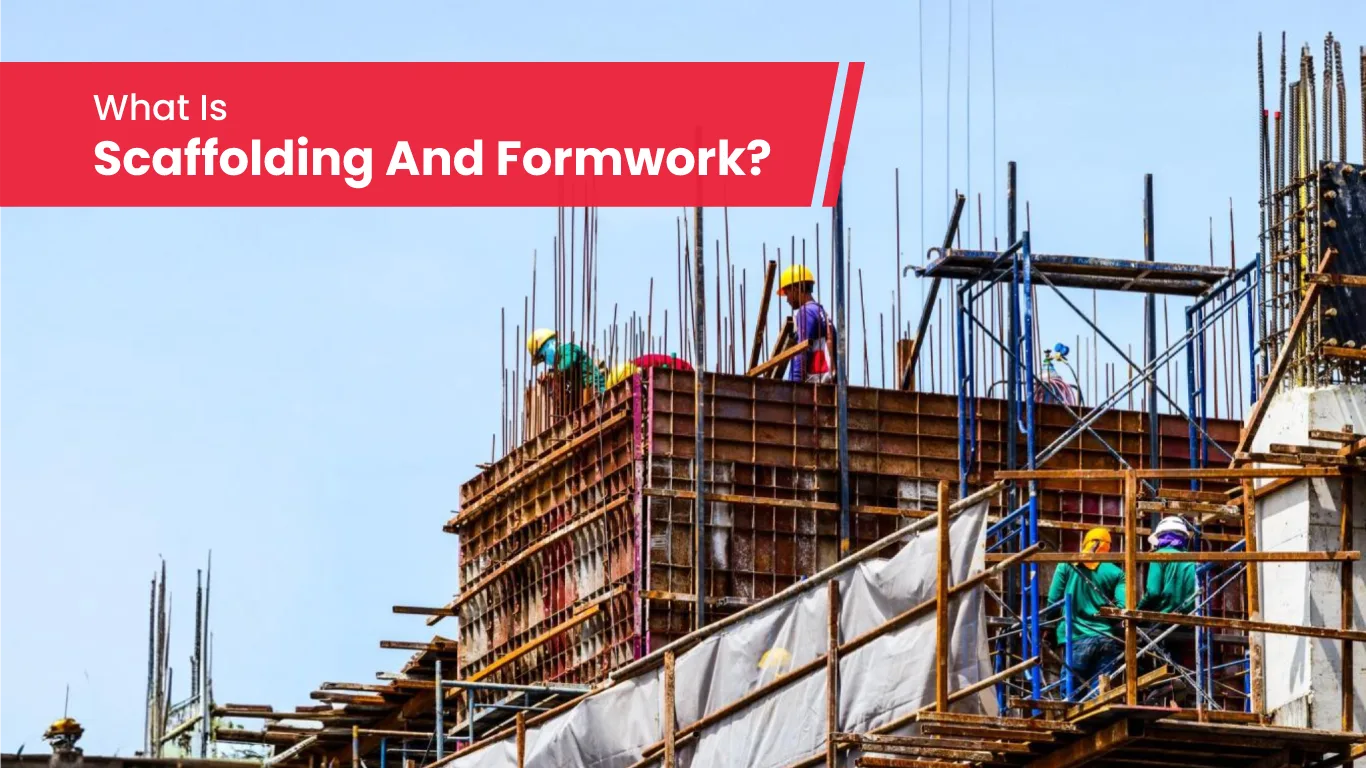While working on a construction project, you may have come across scaffolding and formwork. These are known to be temporary structures used in the industry. Once workers set up these structures, they can carry out tasks efficiently. But are you actually aware of scaffolding and formwork? Let’s explore these topics further in this article.
What is scaffolding?
In the construction domain, scaffolding is a component that serves as a temporary structure. Once erected, it provides support during the construction of the building. They may also use the scaffold structure when the building is undergoing renovation. Usually, these are made from wood or metal. It also offers a stable platform for access to elevated areas. As soon as workers use the scaffolding, they can lay bricks, paint the exterior, and carry out many tasks. However, workers must verify the proper design of the structure to ensure safety. If they need to build scaffolds for different projects, then a modular scaffold can be useful.
What is Formwork?
When workers use scaffolding formwork during the construction phase, it serves as temporary mold. This structure helps support concrete until it sets. Soon after pouring the concrete, it hardens in the formwork. But, before using a formwork, workers check its size and capacity to hold liquid concrete. A meticulously designed formwork can enhance structural integrity. Moreover, workers tend to use formwork due to its adaptability. You can use these to form intricate architectural features or simple slabs.
Types of Scaffolding
At a construction site, you will come across many types of scaffolding. Once you source different components from a well-known scaffolding equipment supplier, you can build these structures.
Cuplock Scaffolding
This type of scaffolding is safe to use because of the locking mechanisms. Primarily, such a structure has vertical standards built from high-quality steel. At a specific distance, 500 mm cups connect these standards. Additionally, workers assemble horizontal ledgers using ledger blades. Workers typically use these scaffolds when they lack the time for assembly. The modular design also offers flexibility when workers have to set a configuration for the project. Different kinds of construction projects use the structure due to its stability.
Tubular Scaffolding
Tubular scaffolds can be an alternative to wood scaffolds. These are quite adaptable when there’s a need for a temporary support system. As workers start building this scaffold, they use clamps to connect diagonal braces and horizontal tubes. Furthermore, they can adjust the framework to suit different building shapes. This flexibility in configuration enables efficient access to different areas at the site. Because of its strength and durability, such a scaffold also provides necessary support for workers even when they are using tools.
Ringlock Scaffolding
The design and efficiency of ringlock scaffolding set it apart from other scaffolds. While workers use the structure, they connect vertical and horizontal bars with a ring-shaped locking mechanism. Generally, the socket is 10 mm thick and 122 mm in diameter. Additionally, it features 8 welded holes spaced 500 mm apart. Because the structure is strong, it provides stability, making it suitable for a variety of construction projects. We recommend using this structure when professionals are seeking an adaptable and reliable scaffolding solution.
H Frame Scaffolding
In comparison with other scaffoldings, an H-frame scaffold creates a stable structure. Horizontal crossbars and vertical uprights allow for the erection of the entire scaffold. The best part is that there are no loose fittings throughout the structure. Workers also don’t have to use any tools to erect the scaffold. Because the structure is robust, it remains stable, reducing the risk of sudden accidents. The ease of assembly and dismantling of the structure enables workers to set it up quickly. The workers can then use their time efficiently while carrying out various tasks.
Types of Formwork
The construction sector uses various types of scaffolding formwork to support concrete until it solidifies. Let’s check out the types of formwork.
Steel Formwork
Such formworks are known for their durability and strength, making them ideal for different concrete shapes. Construction projects can also reuse a steel formwork multiple times. While workers use this formwork, they fasten large steel plates with couplings and bars. Furthermore, the formwork is ideal for large-scale projects and reduces the need to carry out finishing work.
Aluminium Formwork
Workers use these forms whenever they need to create a concrete framework. Even though this formwork is lightweight, it is suitable for bearing the weight of a large quantity of concrete. You may also come across this formwork. Workers also use it for repetitive construction tasks due to its ease of assembly. The formwork is also useful when people have to perform tasks efficiently while constructing tall buildings.
Timber Formwork
When you encounter scaffolding formwork, it refers to wooden structures that are used to mold concrete. Such forms are known for their versatility and cost-effectiveness. Therefore, they find widespread application in small-scale projects. However, they can also serve large-scale projects that require intricate designs. They are not only adjustable but also reusable during different phases. Way ahead, workers have to maintain the forms and handle them with great care. If workers misuse them, they may undergo deformation during the curing process.
Plywood Formwork
If you choose to use plywood scaffolding formworks, they are durable and have no negative environmental impact. Workers can also expect high-quality solidified concrete after using such formwork. These are usually made by placing different layers one over the other. But, even when it’s simple to assemble and dismantle the formwork, people should ensure stability. We also need to take action to prevent it from deteriorating during the concrete curing process.
Conclusion
Finally, you should consider scaffolding and formwork depending on the project’s needs. While you confirm your choice of scaffolding, check for its load-bearing capacity. However, when selecting a formwork, ensure it is reusable and easily adjustable. The chosen formwork and scaffold should also meet local safety standards.
Are you looking for a reliable scaffolding equipment supplier for your project? Well, how about connecting with AAIT scaffolds? While our team understands your requirements, we are flexible in distributing scaffolds throughout the United States. Using a strategic approach, our team ensures the delivery of scaffolding within the specified time frame. In addition, we assure quality for every kind of component.












 Download
Download
Comments are closed